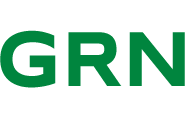700 MW job completed
In recent years, we have realized seven standardized 700-megawatt (MW) grid connections for offshore wind farms. Starting in 2019, a connection was completed annually. Now that Hollandse Kust (west Beta) has also received the grid readiness certificate from DNV, the 700 MW project has been completed - five months ahead of schedule. With this certificate, DNV confirms that the connection meets all high-voltage grid standards and is ready for use.
Under the Electricity Act, the Dutch government designated TenneT as the operator of the offshore grid in 2016. The task: to connect the offshore wind farms to the national high-voltage grid and to transport sustainable electricity. To this end, TenneT has built "offshore sockets," which are connected to the onshore high-voltage grid via electricity cables buried in the seabed.
Milestone: Within time and budget
"In just under ten years, with the rollout of the 700 MW program, we have demonstrated, together with our partners and the market, that we can move mountains," says Marco Kuijpers, Director of Offshore at TenneT. "With grid readiness for Hollandse Kust (West Beta), we have now delivered all seven projects on time and budget, entirely in accordance with our plan. A great milestone for the energy transition."
Enough power for a large city
After construction of the OranjeWind wind farm
In 2026, operator RWE and TotalEnergies will begin construction of the OranjeWind wind farm, with an installed capacity of 795 megawatts. Upon full commissioning, the wind turbines are expected to produce approximately 3 terawatt hours annually enough green energy to supply a city the size of Amsterdam with electricity for almost a year.
Partnership
Construction platforms in the Netherlands and Belgium
TenneT constructed the last three 700 MW power outlets for the Hollandse Kust (North), Hollandse Kust (West Alpha), and Hollandse Kust (West Beta) wind zones off the coast of North Holland. This was done in close collaboration with, among others, the contractor consortium Equans/Smulders, which built the platforms in the Netherlands and Belgium. Martin Gelling, Financial Project Director at TenneT: "We value long-term relationships and invest heavily in long-term contracts with our partners. This helps us execute projects better and sometimes faster."
2 GW program
Direct current over alternating current
With these 700 MW connections, there will be a total installed capacity of 6.1 GW in the Dutch part of the North Sea by 2028. The national government aims to expand this capacity to 21 GW by 2032. To this end, TenneT, in collaboration with the market, developed the 2 GW program as a new standard. These new offshore wind farms will be connected via direct current (DC) connections, as they are located further offshore. Direct current connections ensure lower energy losses over longer distances than alternating current connections.
Clean, stable, and independent
Minimal environmental impact
Gelling: "The new 2 GW standard enables us to transport large amounts of sustainable energy more efficiently from sea to land, using fewer cables and platforms. This saves time and resources and minimizes the ecological impact. Between now and 2032, we will build thirteen of these new connections in the Dutch and German North Sea. This way, we are continuing our journey towards a clean, stable, and independent energy supply for the future."








